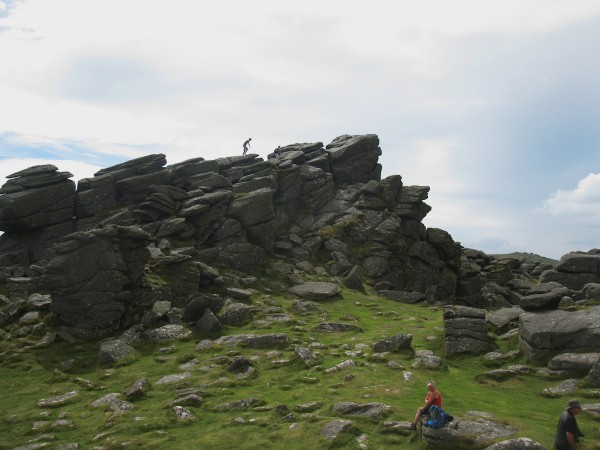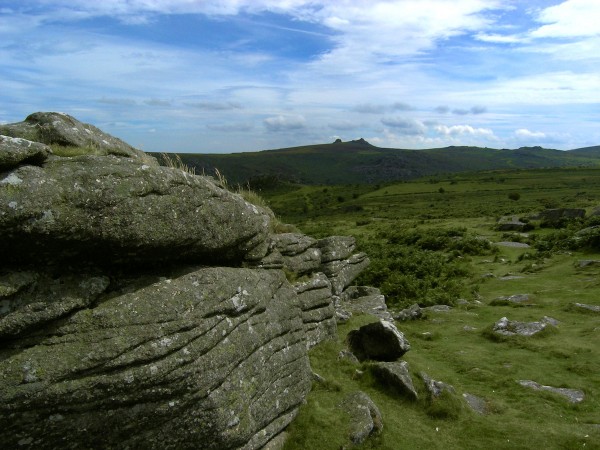![]() The high and rugged scenery of Dartmoor is as wild and untamed a landscape as you’re likely to find in the United Kingdom, and would seem to have more in common with the Scottish Highlands than the prim and proper south of England. Yet not an hour’s drive from the crowded beaches of the ‘English Riviera’*, you can find yourself in a stark, windswept landscape dominated by the tors: granite-topped hills that could easily be mistaken for ruined castles, but are instead the product of millions of years of weathering.
The high and rugged scenery of Dartmoor is as wild and untamed a landscape as you’re likely to find in the United Kingdom, and would seem to have more in common with the Scottish Highlands than the prim and proper south of England. Yet not an hour’s drive from the crowded beaches of the ‘English Riviera’*, you can find yourself in a stark, windswept landscape dominated by the tors: granite-topped hills that could easily be mistaken for ruined castles, but are instead the product of millions of years of weathering.
Around 300 million years ago, the Variscan orogeny, the collision between Gondwana (Africa and South America) and Laurussia (North America, Northwest Europe and the UK) that marked the final assembly of the supercontinent Pangea, produced the wickedly folded and metamorphosed rocks that can be found on the coasts of Cornwall, Devon, and South Wales, and thickened the crust enough to cause the lower reaches to melt. This produced a large granite intrusion – a batholith – that runs down the buried spine of Devon and Cornwall all the way down to Lands End. In various places, it pokes above the surface, the largest of these outcrops being Dartmoor.

Geological Map of SW England. Granites are garish pink. Source: BGS (click image to go to their online map viewer).
I first visited Dartmoor when I was around 6 or 7, and I remember being fascinated by the tors, which were looming and mysterious and great for causing my mother minor heart attacks as I clambered around them in a death-defying manner. As someone who grew up on the flat coastal plains of East Anglia, this was probably one of the first times that I realised that landscapes could be interesting. Thus was born a life-long love affair with pointy places and the interesting rocks you find there. Last summer, 25 years or so later, it was great fun to revisit the tors and look at them as the geologist that they helped inspire me to eventually become. And find some rather impressively large feldspars whilst I was at it.
Larger versions of all these images can be seen by clicking on them.

A large plagioclase phenocryst visible in the weathered and lichen encrusted granite of Dartmoor. Photo: Chris Rowan, 2011.
*Not an ironic designation, as far as I can tell. Because hey, it doesn’t rain all the time…








Comments (6)